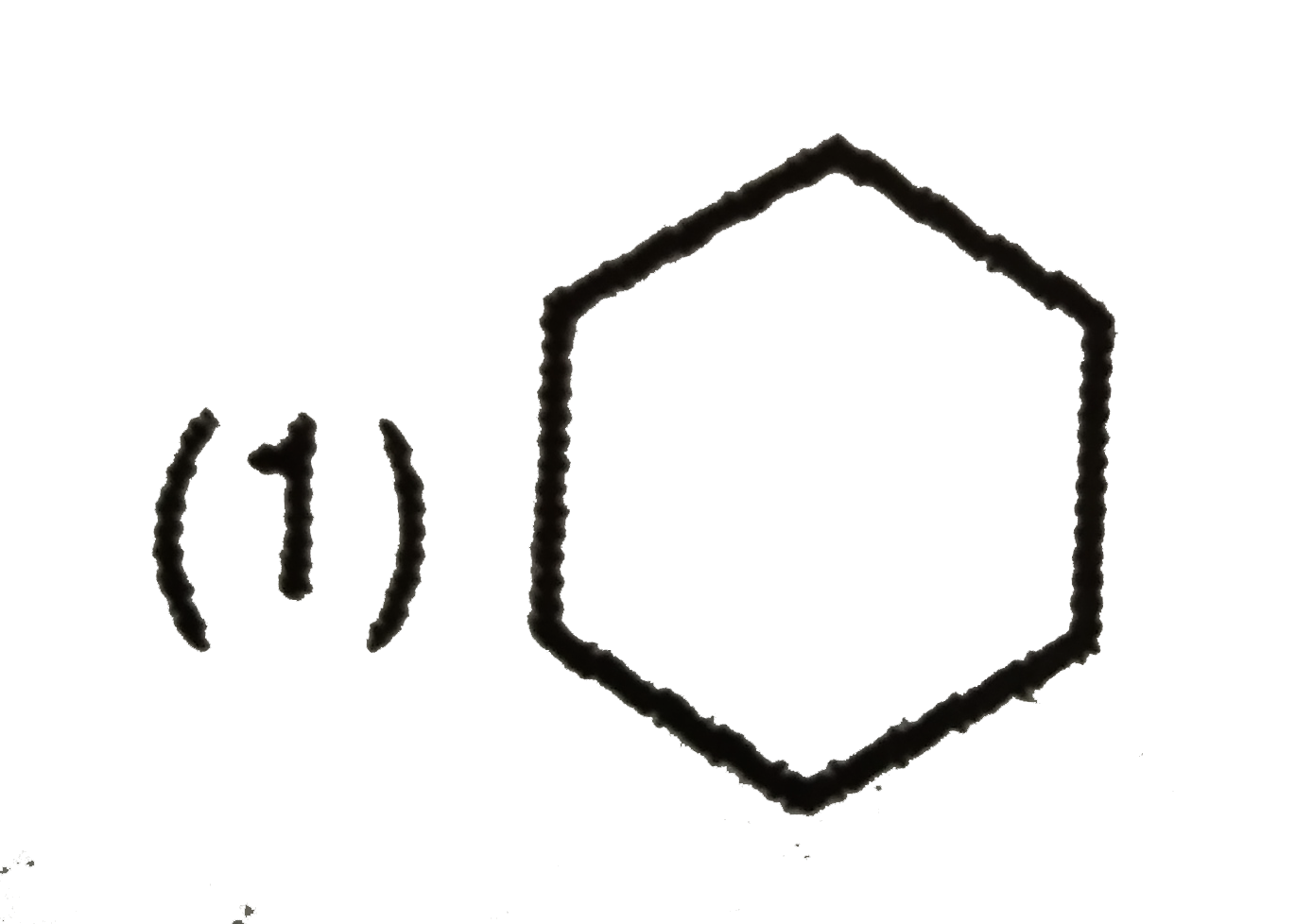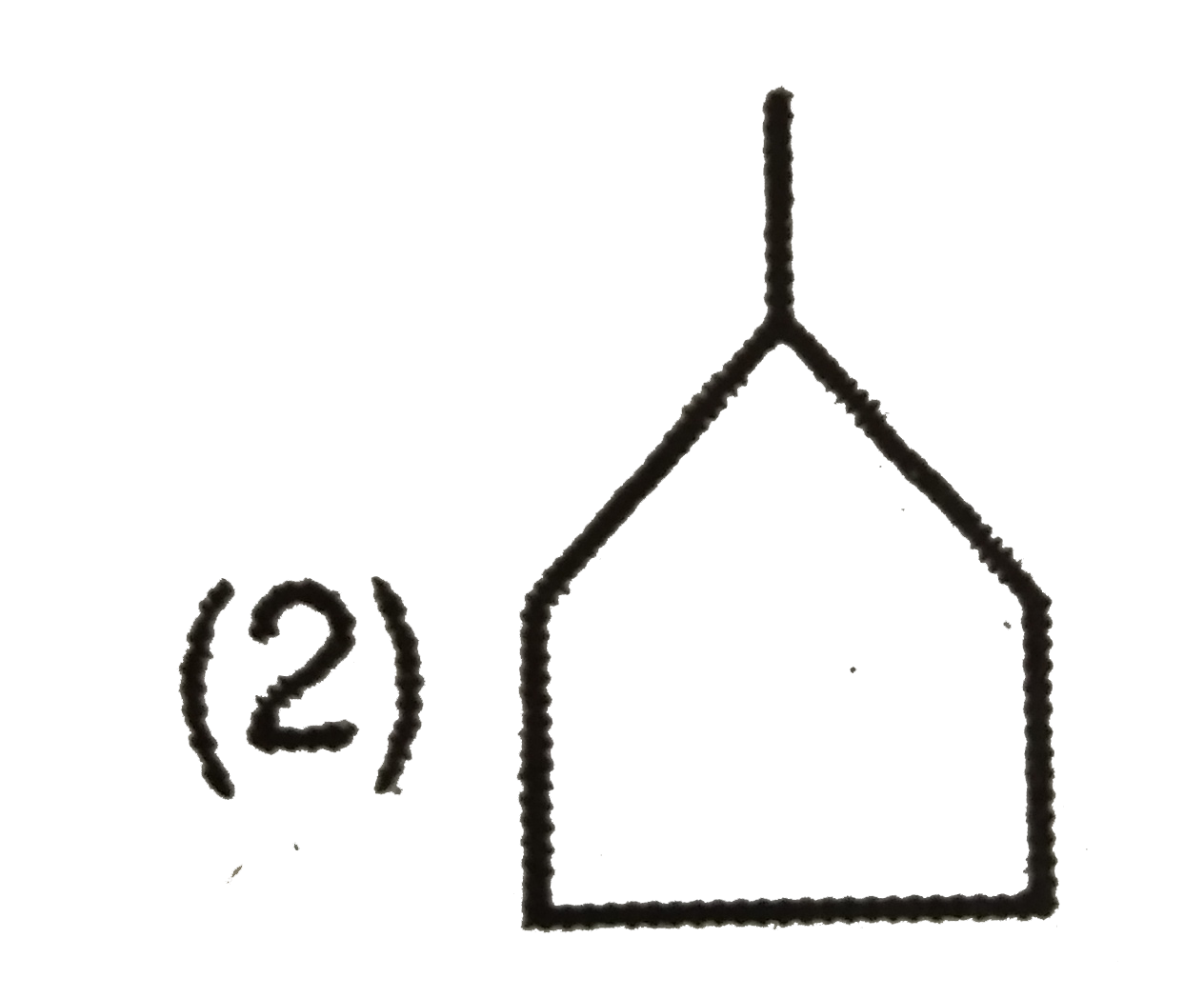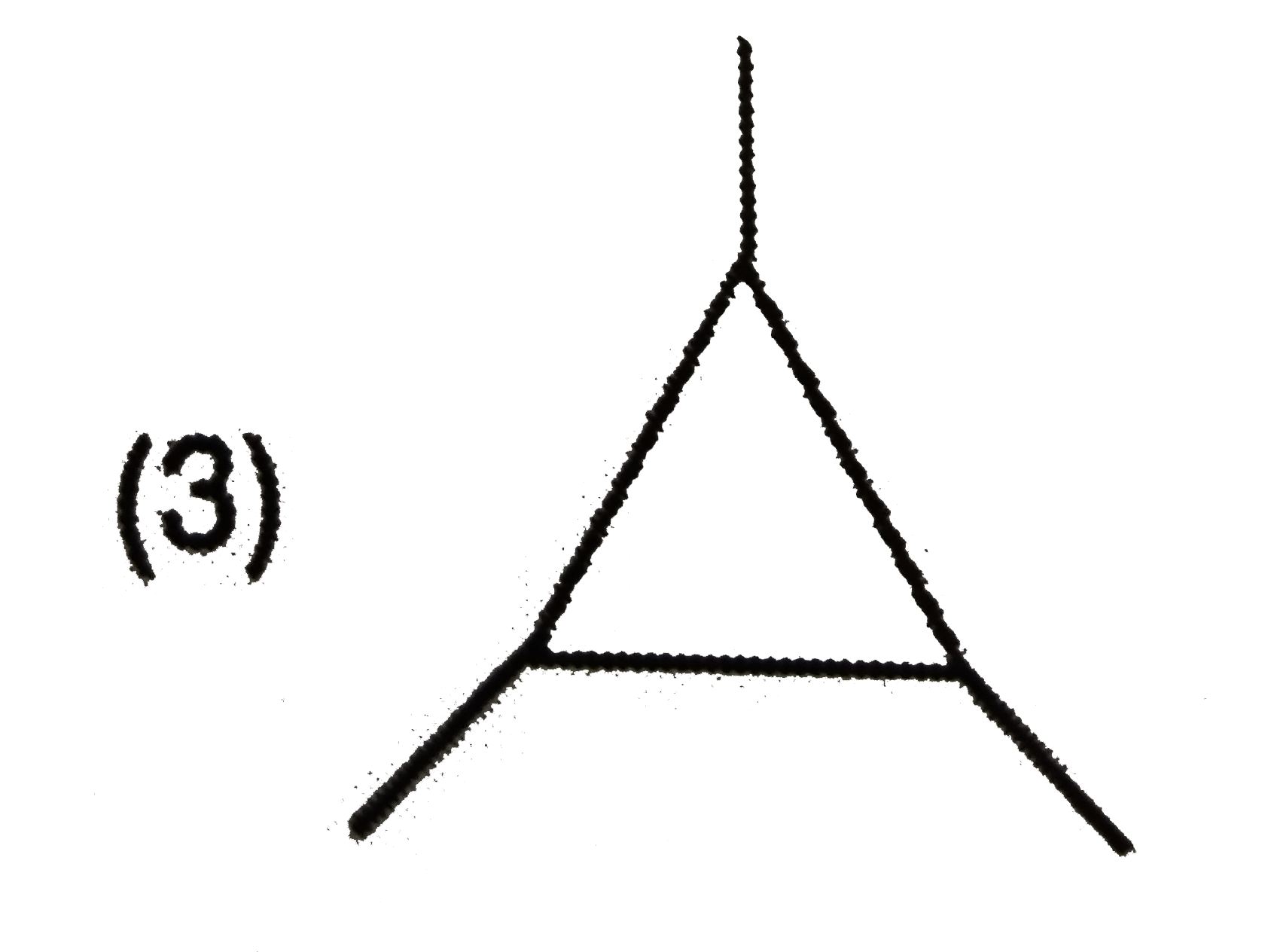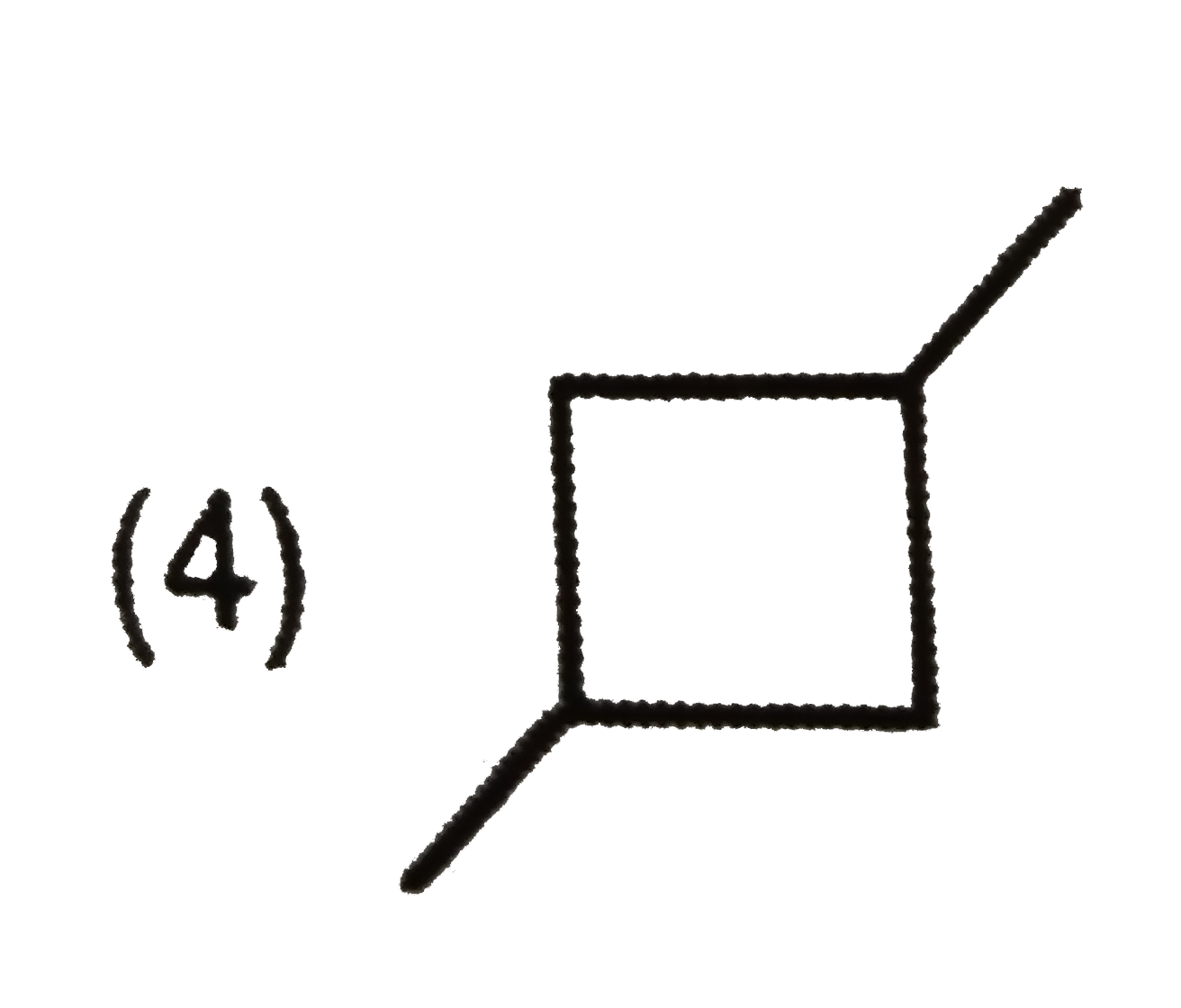Compound A(C6H12) does not absorb H2 in presence of Ni. It forms two monochloro isomers on photochemical chlorination . Its structure can be




The correct Answer is:C
To solve the problem regarding compound A (C₆H₁₂), we will analyze the information provided step by step.
Step 1: Analyze the Molecular Formula
The molecular formula of compound A is C₆H₁₂. This indicates that it is an alkene or a cycloalkane because it has the general formula CₙH₂ₙ for alkenes or CₙH₂ₙ for cycloalkanes. The fact that it does not absorb H₂ in the presence of nickel suggests that it is not an alkene, as alkenes typically undergo hydrogenation.
Hint: Remember that alkenes can be hydrogenated, while cycloalkanes cannot.
Step 2: Determine the Structure of Compound A
Since compound A does not absorb H₂, it is likely a cycloalkane. The only cycloalkane with the formula C₆H₁₂ is cyclohexane (C₆H₁₂).
Hint: Consider the properties of cycloalkanes and their saturation levels.
Step 3: Photochemical Chlorination
The problem states that compound A forms two monochloro isomers upon photochemical chlorination. In the case of cyclohexane, chlorination can occur at various positions, but due to the symmetry of the cyclohexane ring, there are only two distinct positions for substitution that lead to unique isomers.
Hint: Identify the positions on the cyclohexane ring where chlorine can be substituted to form different isomers.
Step 4: Identify the Monochloro Isomers
In cyclohexane, the two unique monochloro isomers can be formed by substituting chlorine at:
1. One of the carbons in the ring (e.g., C1).
2. Another carbon in the ring that is not adjacent to the first substitution (e.g., C3).
These substitutions yield two distinct isomers due to the different spatial arrangements of the chlorine atom.
Hint: Visualize the cyclohexane structure to see how substituents can lead to different isomers.
Conclusion
Based on the analysis:
- Compound A is cyclohexane (C₆H₁₂).
- It does not absorb H₂ in the presence of nickel.
- It forms two distinct monochloro isomers upon photochemical chlorination.
Thus, the structure of compound A can be concluded to be cyclohexane.
Final Answer
The structure of compound A is cyclohexane (C₆H₁₂).
The molecular formula of compound A is C₆H₁₂. This indicates that it is an alkene or a cycloalkane because it has the general formula CₙH₂ₙ for alkenes or CₙH₂ₙ for cycloalkanes. The fact that it does not absorb H₂ in the presence of nickel suggests that it is not an alkene, as alkenes typically undergo hydrogenation.
Since compound A does not absorb H₂, it is likely a cycloalkane. The only cycloalkane with the formula C₆H₁₂ is cyclohexane (C₆H₁₂).
The problem states that compound A forms two monochloro isomers upon photochemical chlorination. In the case of cyclohexane, chlorination can occur at various positions, but due to the symmetry of the cyclohexane ring, there are only two distinct positions for substitution that lead to unique isomers.
In cyclohexane, the two unique monochloro isomers can be formed by substituting chlorine at:
1. One of the carbons in the ring (e.g., C1).
2. Another carbon in the ring that is not adjacent to the first substitution (e.g., C3).
Based on the analysis:
- Compound A is cyclohexane (C₆H₁₂).
- It does not absorb H₂ in the presence of nickel.
- It forms two distinct monochloro isomers upon photochemical chlorination.
The structure of compound A is cyclohexane (C₆H₁₂).
Topper's Solved these Questions
- BOOK - RESONANCE ENGLISHCHAPTER - STRUCTURAL IDENTIFICATION & PRACTICAL ORGANIC CHEMISTRYEXERCISE - Part-III27videos
STRUCTURAL IDENTIFICATION & PRACTICAL ORGANIC CHEMISTRY
- BOOK - RESONANCE ENGLISHCHAPTER - STRUCTURAL IDENTIFICATION & PRACTICAL ORGANIC CHEMISTRYEXERCISE - Additional theory4videos
STRUCTURAL IDENTIFICATION & PRACTICAL ORGANIC CHEMISTRY
- BOOK - RESONANCE ENGLISHCHAPTER - STRUCTURAL IDENTIFICATION & PRACTICAL ORGANIC CHEMISTRYEXERCISE - Jee main6videos
STRUCTURAL IDENTIFICATION & PRACTICAL ORGANIC CHEMISTRY
- BOOK - RESONANCE ENGLISHCHAPTER - SOLID STATEEXERCISE - Part- IV21videos
SOLID STATE
- BOOK - RESONANCE ENGLISHCHAPTER - THERMODYNAMIC & THERMOCHEMISTRYEXERCISE - INORGANIC CHEMISTRY(P-Block Elements)26videos
THERMODYNAMIC & THERMOCHEMISTRY
Similar Questions
Compound A C6H12 forms two monochloro isomers on photochemical chlorination. Its structure can be :
View SolutionA compound (P) having molecular formula C6H10 contains two DU. It yields Q(C6H12) when reacts with excess of H2 of the presence of Ni. On ozonolysis P gives cyclopentanone and compound Y.
IdentifythestructureofthecompoundPView Solution
Knowledge Check
- Question 1 - Select One
An alkane C6H14 gives two monochloro derivatives on chlorination. Its possible structure is
ACH3CH2CH2CH2CH2CH3BCH3−C∣CH3H−CH2CH2CH3CCH3−C∣CH2CH3H−CH2CH3DCH3−CH3∣CH−CH3∣CH−CH3
Read the following passage carefully and answer the questions :
CH2=CH−C∣H1C=C∣CH3−CH=CH2 ,
How many total monochloro structure isomers obtained on chlorination of product (N).View SolutionAmong the isomeric alkanes formula C5H12, identify the one that on photochemical chlorination yields only monochloro derivative.
View SolutionA compound (P) having molecular formula C6H10 contains two DU. It yields Q(C6H12) when reacts with excess of H2 of the presence of Ni. On ozonolysis P gives cyclopentanone and compound Y.
The compound Q gives the number of of monochlorination productsView SolutionC12H10 is an aromatic compound which on ozonolysis gives mixture of Glyoxal and 2-Oxopropanedial in ratio 3:2 it structure can be :
View SolutionName the gas evolved when KClO3 undergoes thermal decomposition
View SolutionAmong the isomeric alkanes of molecular formula C5H12, identify the one that on photochemical chlorination yields
(i) A single monochloride.
(ii) Three isomeric monochlorides.
(iii) Four isomeric monochlorides.View SolutionAmong the isomeric alkanes of molecular formula C5H12, identify the one that on photochemical chlorination yields
(i) A single monochloride.
(ii) Three isomeric monochlorides.
(iii) Four isomeric monochlorides.View Solution

